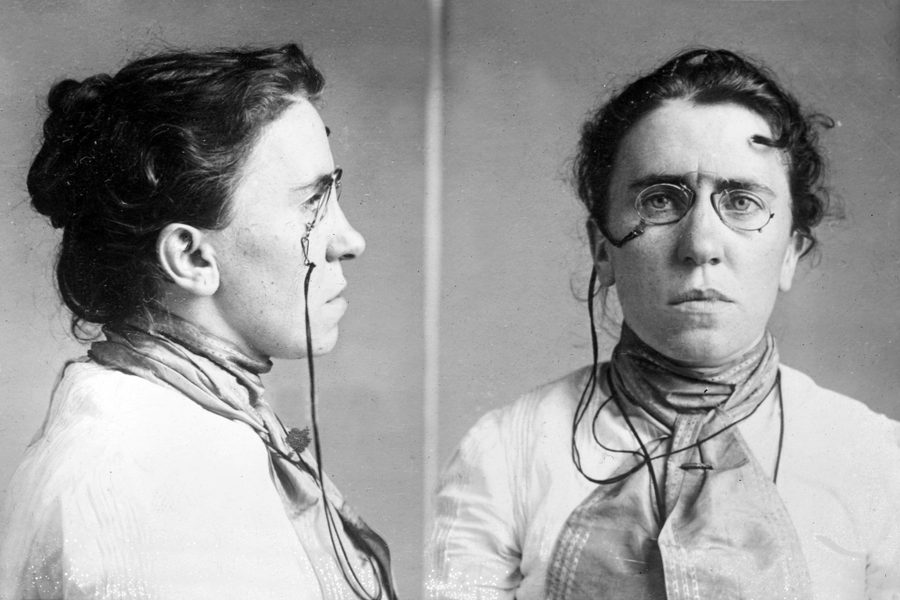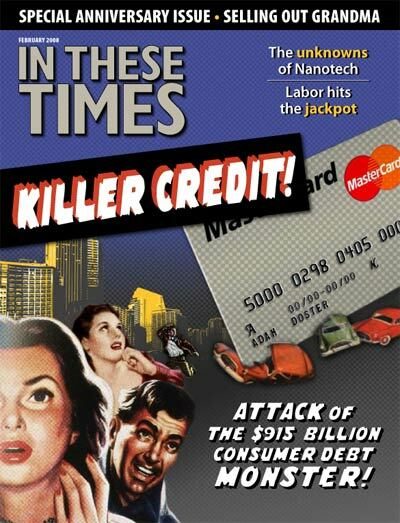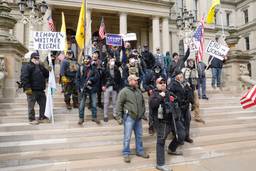
Boston-born author Francisco Goldman’s American-Jewish and Guatemalan heritage has allowed him to move between those cultures and explore the complicated and often tragic relationship between his mother’s homeland and El Norte. After covering the bloody civil wars in Central America in the 1980s for Esquire, Harper’s and The New Yorker, Goldman penned three hauntingly beautiful novels, The Long Night of White Chickens, The Ordinary Seamen and The Divine Husband, each of which alternates between Central America and the United States for their settings.
Last year, Goldman published his first nonfiction book, The Art of Political Murder. It chronicles the 1998 slaying of Guatemalan bishop and human rights advocate Juan Gerardi – dubbed “the crime of the century” – and the dramatic trial that ended in 2007 with the convictions of several high-ranking Guatemalan military officers – convictions that are unprecedented in a country where impunity rules the land with a bloody fist. (Gerardi was murdered two years after the end of the country’s 36-year civil war.)
Goldman’s book also entered the political discourse in Guatemala and may have helped stop former Gen. Otto Pérez Molina, who has alleged ties to Gerardi’s murder, from winning a close presidential election runoff in November 2007.
How important was Bishop Juan Gerardi for Guatemala, both in life and in death?
When the Guatemalan army and the guerrillas signed the ‘96 peace accords – formally ending the civil war in which at least 200,000 civilians had been murdered – the army, the victor in the war, was easily able to impose its terms on the acquiescent Guatemalans. That meant total amnesty for all human rights crimes committed during the war. For Guatemala to have peace, they decided, it also had to have silence, official forgetting and no justice.
Bishop Gerardi, as head of the Guatemala Archdiocese’s Office of Human Rights, said no to that. He and the office of human rights sponsored an unprecedented report into the war and the crimes of the past that smashed every taboo in Guatemala against speaking out and assigning blame – and even naming names.
The report was called Guatemala: Nunca Más (Never Again), and in its pages, for the first time ever, Guatemalans spoke to Guatemalans and to the world about what had happened – in words that hid none of the army’s savagery and cruelty. The report also concluded that the army was responsible for all but some 5 percent of those murders. The report changed the entire dynamic of the post-war period, and, of course, Gerardi was murdered only two days after its release. It was a heroic effort, that report and Gerardi’s leadership, no doubt about it.
How was his murder different from the 200,000 other assassinations during the civil war?
There were other murders similar to Bishop Gerardi’s murder. The Myrna Mack murder for example – stabbed to death, stabbed 27 times, in a Guatemala City street in a crime faked to resemble a frenzied crime of passion. It was street theater. There is a history of such crimes in Guatemala, when murder is meant to eliminate a high-profile figure, or to be a symbolic murder, to send a message. These are creative murders. What Virginia Woolf said, “a room of one’s own” is to a fiction writer, the institution of impunity is to state-sponsored murderers. If you don’t have to fear justice, you don’t have to worry about getting caught. You can dream up some really theatrical murders.
Many journalists, human rights workers and church officials who’ve asked too many questions, Americans not excluded, have met gruesome fates in Guatemala. Did you feel scared for your own safety?
Everyone involved in the Gerardi case faced danger. At least 10 people related to the case were killed, many more sent into exile. The guys who investigated the case for the Office of Human Rights, the brave prosecutors, the few honest Guatemalan journalists working the case, were all in much more danger than I was.
Were some threats directed my way? Yes: a phone call in Brooklyn. A weird incident outside my hotel window one night. But compare that to what the young men from the Office of Human Rights or prosecutor Leopoldo Zeisig or the judges at the trial were enduring: round the clock threats, verbal, physical, actual. And they almost never mentioned it. It was a code of honor not to talk about it.
Impunity still rules the day in Guatemala, most notably to the benefit of general and ex-president Efraín Rios Montt, who has yet to face trial. And yet at least some of the military men who participated in Gerardi’s murder were convicted. Could the prosecution of Gerardi’s murderers change things?
I think the wheels of justice regarding Guatemala are turning, slowly but inevitably. The new president has promised to re-open the Gerardi case. The courts in Spain are proceeding, however slowly, with their case against some of the Guatemalan generals, hopefully, eventually, including Rios Montt. The new U.N. commission against clandestine groups is about to open shop in Guatemala, and some even think it might take the Gerardi case, too. And that’s important, because Guatemalans need that kind of international support if they are to have any chance to take on these murderous mafias – the military-narco clandestine groups at the heart of power. It’s going to be a very difficult battle, but the precedents and examples are there.
Gen. Otto Pérez Molina, whom you implicated as possibly having participated in the conspiracy to murder Gerardi, narrowly lost the presidential election runoff in November to a left-of-center businessman, Álvaro Colom. How did you react when you heard those results?
I was thrilled that Colom won, mainly just because Pérez Molina lost. Someone close to the U.N. people told me that if Pérez Molina had won, there would have been no point in the U.N. commission even coming to Guatemala. I was happy, too, that the charges in the book against Pérez Molina became a part of the campaign, especially at the grassroots level.
How will Colom do as president of Guatemala?
I really don’t know how Colom will do. It never pays to be optimistic about a Guatemalan president. The dark forces arrayed against his best intentions, whatever they are, are just so overwhelming. But if he can run a fairly clean government, and change the substance of the country’s political discourse, and let the Mayan majority finally have a real voice in governing the country, as he seems intent on doing, and if he can work with the U.N. to push some legal cases forward, then it could be a positive presidency.
How has Guatemala changed between the bloody 1980s and now?
During the war, political terror was everywhere. People weren’t just afraid of speaking thoughts that might sound subversive to somebody, they were afraid of thinking them. In that sense it’s freer now.
For a number of reasons, including the Internet and everyone having immigrant relatives in the United States, information flows a lot more freely. The violence isn’t political anymore. Unless you are doing something like working on the Gerardi case, you don’t live in fear of government deathsquads and such anymore. Instead you live in fear of a new kind of violence, anarchic, rampant, senseless, street crimes, kidnappings, gang violence, the most horrific violence against women. Or you live in fear of your children starving to death.
The Art of Political Murder is your first nonfiction book. How was this project different than your novels?
The Art of Political Murder was much easier to write than my novels. After all, you are not inventing a whole world, or having to make every decision yourself about the course of events, and you are not working intuitively – blindly and sometimes hopelessly lost – as you do when writing a novel.
The violence in the case, actual, emotional, was very real, and sometimes it would take you over, a combination of obsession, fear, violent feeling, sorrow, and I didn’t always like that. It would get in the way of things, such as, sometimes, being as sweetly intimate with my wife as I wanted to be. But it was also exhilarating, and sometimes hilarious, and it was an honor to share the experience with the remarkably courageous and high-spirited people the book is most about.
It reads like a novel, especially since some of the events during the trial seem almost implausible, such as the defense’s charges that a German shepherd bit Gerardi to death.
I hope it does read like a novel. The case was a real epic journey, it just seemed, as we were living it, that there was always one more obstacle to overcome, it was endless, no direction home and, like in all good legal cases, God was always in the details. So you had to narrate it like that: step-by-step, solving problems one at a time, letting the sudden twists and surprises occur as they did, and so on.
Does your home in Mexico work as a thematic bridge between Guatemala and the United States, given that your books use those two places as dual settings?
I’ve always considered Mexico City my neutral zone, perfectly placed between the two locations of my, at least, writerly preoccupations. That’s changing now. I need to write about Mexico now. I don’t know if that means I will have to move. Hope not, I love Mexico City.
What’s next on your plate?
What I’m writing now is still secret. I am going to take a break from Guatemala for a while, but I’ll be back. There are too many stories of Guatemalan death and life that I still need to try and get at.
Jacob Wheeler is a former In These Times assistant editor. He edits and publishes the Glen Arbor Sun in Leelanau County, Mich.








